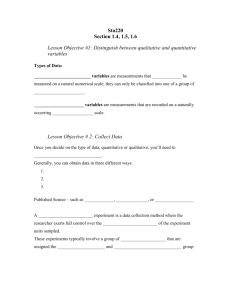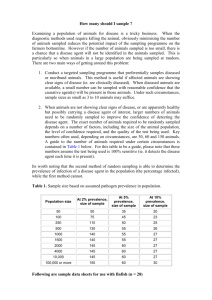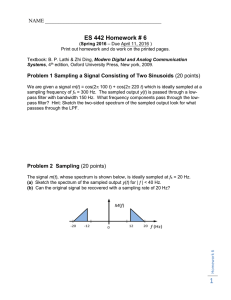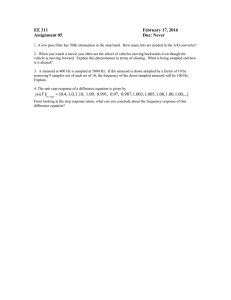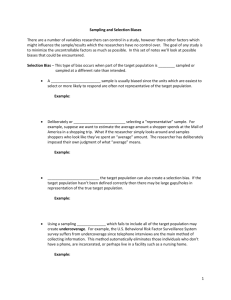Vick Lab and Rubric
advertisement
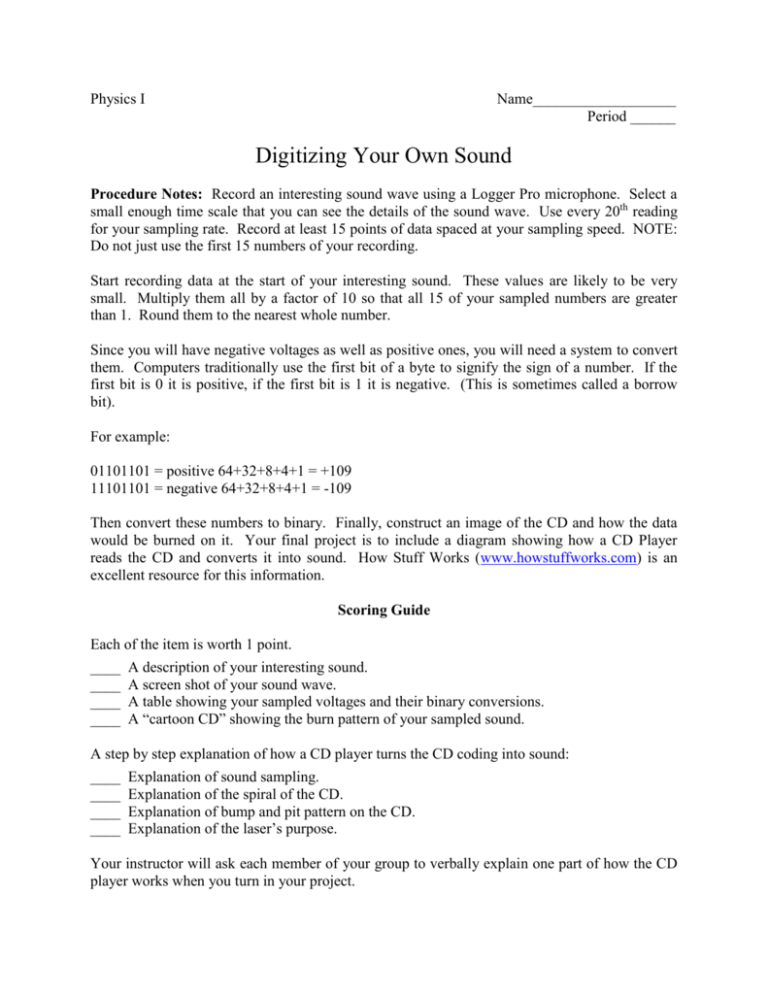
Physics I Name___________________ Period ______ Digitizing Your Own Sound Procedure Notes: Record an interesting sound wave using a Logger Pro microphone. Select a small enough time scale that you can see the details of the sound wave. Use every 20th reading for your sampling rate. Record at least 15 points of data spaced at your sampling speed. NOTE: Do not just use the first 15 numbers of your recording. Start recording data at the start of your interesting sound. These values are likely to be very small. Multiply them all by a factor of 10 so that all 15 of your sampled numbers are greater than 1. Round them to the nearest whole number. Since you will have negative voltages as well as positive ones, you will need a system to convert them. Computers traditionally use the first bit of a byte to signify the sign of a number. If the first bit is 0 it is positive, if the first bit is 1 it is negative. (This is sometimes called a borrow bit). For example: 01101101 = positive 64+32+8+4+1 = +109 11101101 = negative 64+32+8+4+1 = -109 Then convert these numbers to binary. Finally, construct an image of the CD and how the data would be burned on it. Your final project is to include a diagram showing how a CD Player reads the CD and converts it into sound. How Stuff Works (www.howstuffworks.com) is an excellent resource for this information. Scoring Guide Each of the item is worth 1 point. ____ ____ ____ ____ A description of your interesting sound. A screen shot of your sound wave. A table showing your sampled voltages and their binary conversions. A “cartoon CD” showing the burn pattern of your sampled sound. A step by step explanation of how a CD player turns the CD coding into sound: ____ ____ ____ ____ Explanation of sound sampling. Explanation of the spiral of the CD. Explanation of bump and pit pattern on the CD. Explanation of the laser’s purpose. Your instructor will ask each member of your group to verbally explain one part of how the CD player works when you turn in your project.
